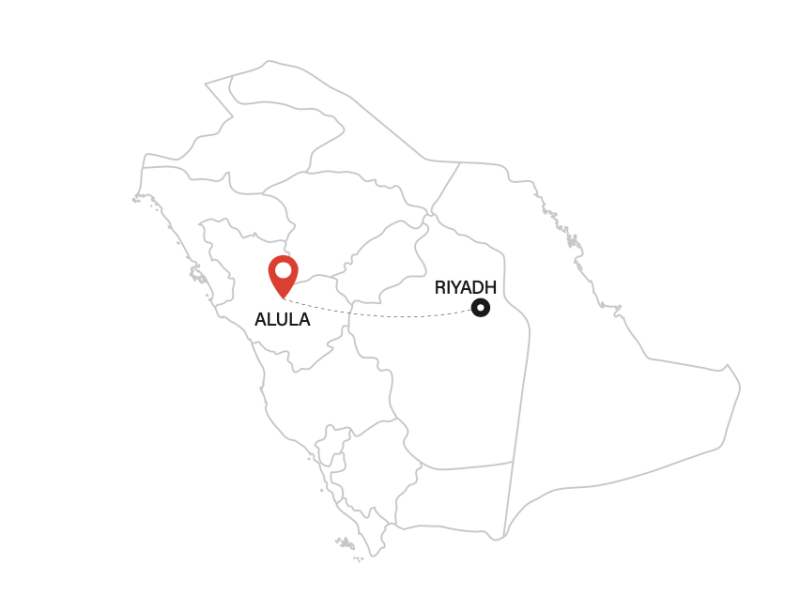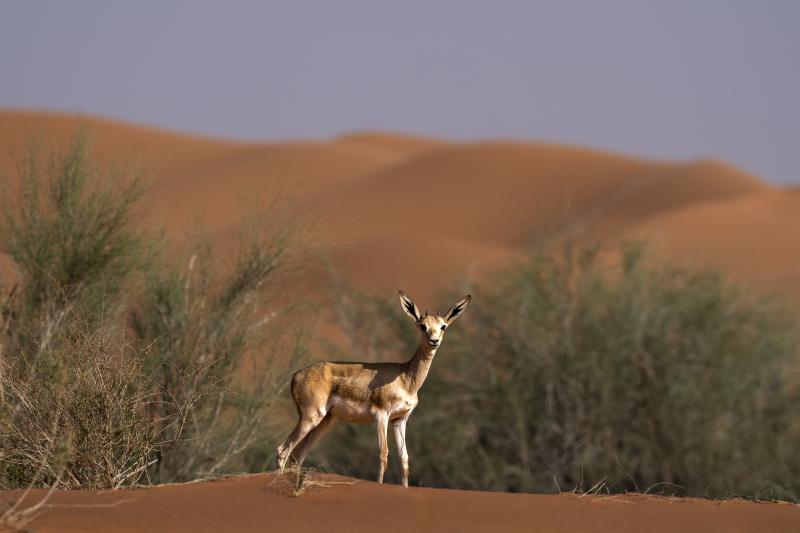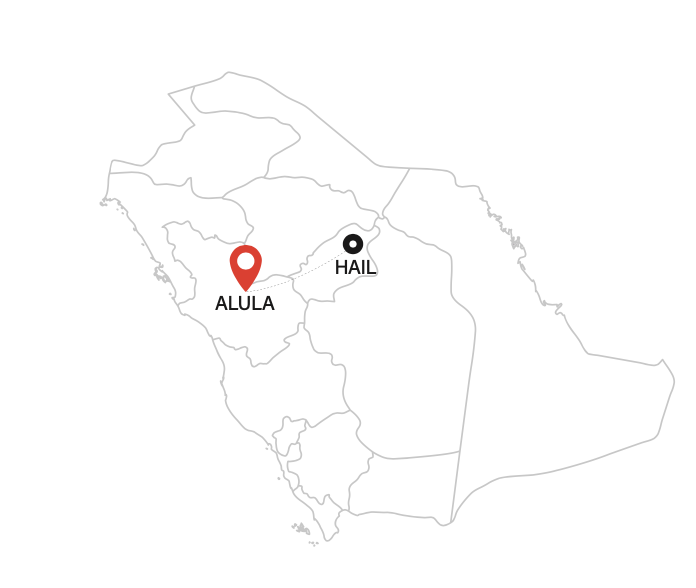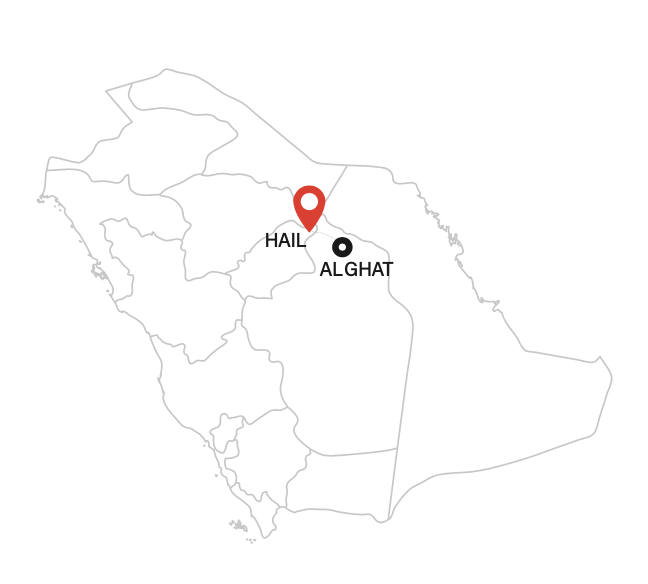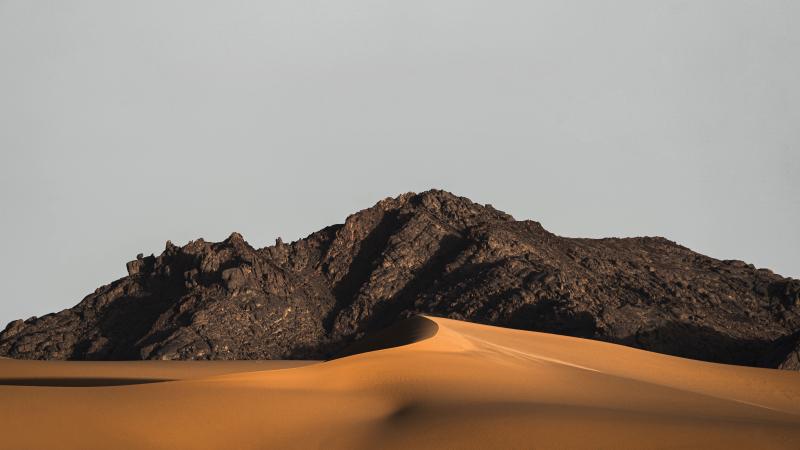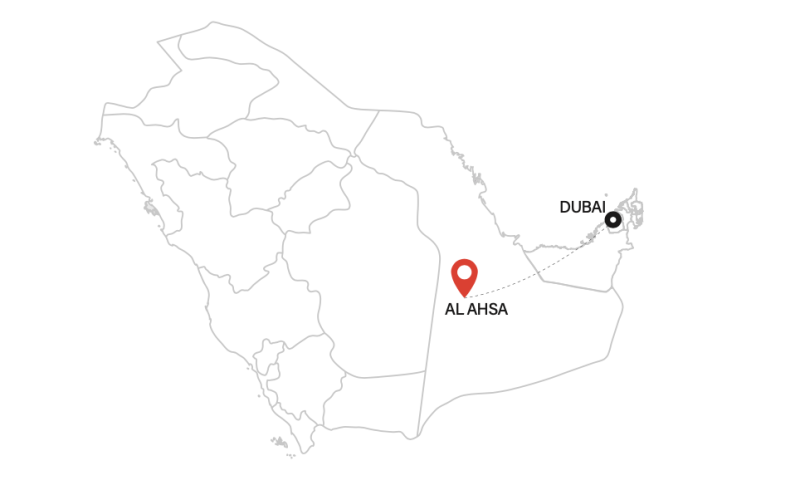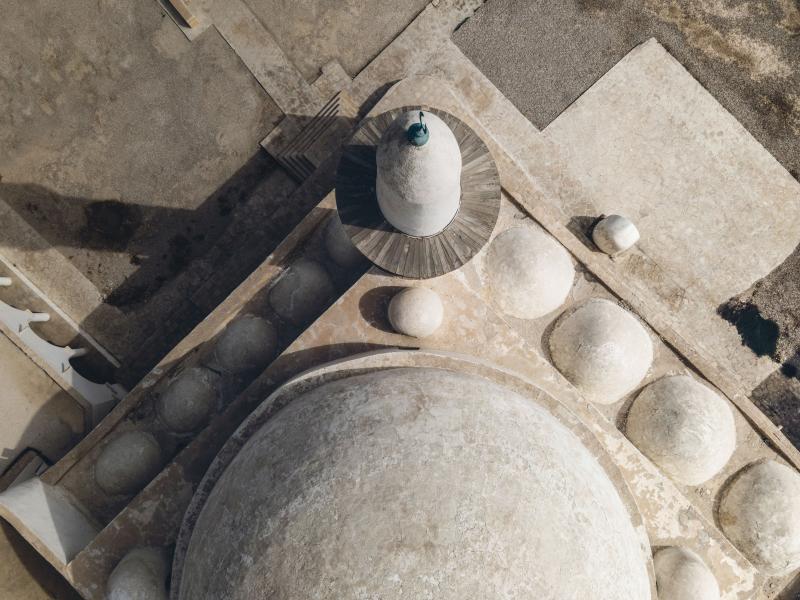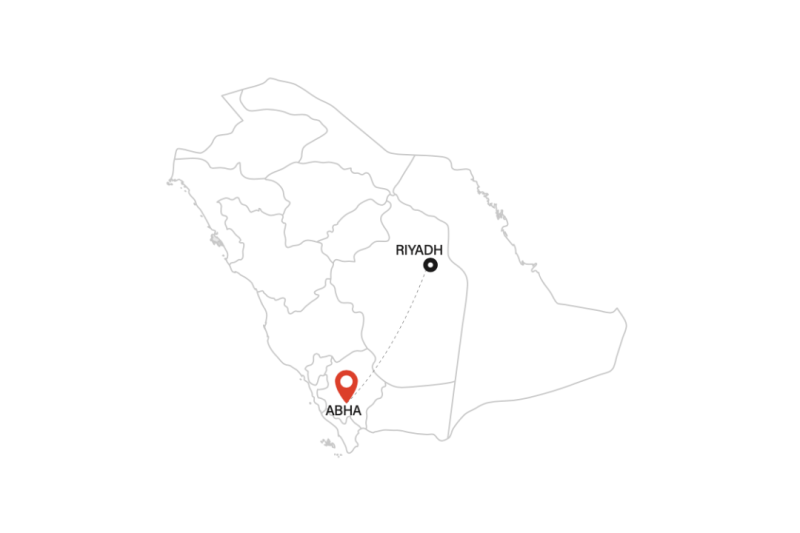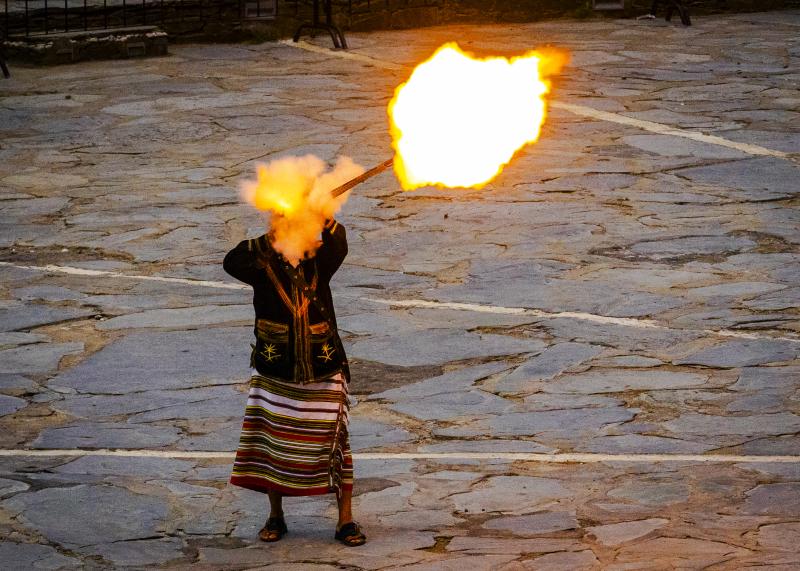On the Open Road: These are the Kingdom's best roadtrip routes
On the Open Road: These are the Kingdom's best roadtrip routes
Take the wheel as we go on the most iconic road trips through the Kingdom with photographer and storyteller Ziyad Alarfaj

Be it the ruins of the Nabataean civilisation in AlUla, the ochre deserts of the north, or the coral reefs of the Red Sea, Saudi is a visual treat for anyone who loves to put the pedal to the metal and travel by road.
The land’s diversity and richness reflect its long history of cultural exchange and influence. From majestic mountains and lush valleys to pristine coastline and the vast desert of the Empty Quarter, each region offers a glimpse into Saudi’s natural beauty and heritage.
And, there’s no better way to explore the country by road than through the eyes of a seasoned traveller.
Ziyad Alarfaj is one such passionate wanderer who immerses himself in the culture, interacts with locals, and journeys through hidden worlds to find treasure troves of heritage and scenic beauty. Unlike a toursit who might book a stay at a beautiful and convenient resort, Ziyad is a visual storyteller who takes the road less travelled and tours with a tent on his car – fully prepared to camp anywhere. Armed with food, water, solar panels, shower equipment, and enough supplies to survive a week without having to deal with civilisation, Ziyad’s road trips are all about uncovering a thrilling secret.
“Travel is in our blood. My grandfather was a merchant when he left Saudi. He was probably 12 years old. He travelled between the Gulf, the Arabian Peninsula, Africa, and the Indian subcontinent. He used to tell me about his journeys and travels, and that stuck in my head. Traveling at that time was by boats, or inland by horses and camels, and for a young boy to hear about all these places, it was fascinating! He was an amazing storyteller. It built up my imagination and the passion to travel,” he says.
Here, we journey through Saudi with Ziyad, as he shares three road trips he took across the Kingdom and the incredible beauty he came across tucked away in the country’s less-explored corners. We begin with a truly scenic route: Riyadh to AlUla. If there’s a trip that gives you directions straight to the heart of the country’s culture, heritage, and history, this is the one – passing through the cities of Al Ghat and Hail.
Trip 1: Riyadh to AlUla - 11 hours
First Leg: Riyadh to Al Ghat - 2 hours
Riyadh Province’s Al Ghat, a tiny village situated 230km northwest of the capital, is one of the most expansive and well-preserved traditional villages in Saudi.
“The mountains plateau at the top, which makes for breathtaking scenery around Riyadh. On the surface we see striking buildings and landscapes, but when we actually dig deeper, we understand the history of the place and the different kinds of life that once existed. When you go beyond Riyadh towards Qiddiyah and the mountains, they are just incredible. In winter, at sunrise and sunset, you can see beautiful scenery here,” Ziyad says.
The journey towards Al Ghat, renowned as the birthplace of the famous Bateel dates, is almost a straight line, cutting through the hills, with lots of hidden gems surrounding the capital. Talking about the geographical beauty of this scenic route, Ziyad explains that there are three unique features you will find there.
First, the drive takes you through mountains, from the peak to the bottom, making for a picturesque journey. Then, there’s the striking landscape of “a wadi that cuts through the hills and farms, some of which are on the border of impressive sand dunes. When you stand at a farm, you have this feeling of a huge sand wave coming towards you.” The third, and most striking, view is that of “Al Ghat’s old town where you see traditional mud houses – unfortunately now abandoned as most people moved into modern concrete houses or to Riyadh for work.”
From exploring the lively markets and shopping centres of Riyadh to marvelling at the natural beauty of Al Ghat, this is the perfect start to the trip. And for those travelling during the rain, green bushes and beautiful waterfalls are a common sight.
Second Leg: Hail to AlUla - 5 hours
From desert dunes to volcanic mountains, this route is filled with otherworldly geological wonders.
AlUla has much more to offer than meets the eye. For starters, the carvings from Hail continue all along the way between the cities.
Ziyad’s experience of the area is very different to what we see on social media. Besides being home to the biggest open museum in the world, it has historic dwellings, sandstone outcrops, preserved tombs, and many monuments of historical significance. Ziyad recommends seeing AlUla through the locals’ eyes. Keep in mind that refuelling options may be scarce along this route as it is a remote location.
“You have to go to the villages to witness the marvelousness, and that’s where the AliBaba door opens and you see a different scenery,” Ziyad explains.
Third Leg: Al Ghat to Hail - 4 hours
On this leg of the trip, you’ll see lush date palm farms and desert terrain that will feel like a breath of fresh air. The city of Hail is in the centre of the northern Arabian Peninsula and has a lot of farms and mountains.
Hail’s history runs deep. It was home to poet Hatim Al Tai, said to be one of the most generous people. He used to light a fire on the mountain and host anyone who wished to join. The legend may have rested, but his generosity lingers in the hearts of the people of Hail. While you are there, Samra Mountain is a beautiful spot to see the twinkling lights of the city.
“In winter, there are the most stunning waterfalls and it’s beautiful. Going there is almost indescribable; there is an energy that is magnificent,” Ziyad says.
About 90km away is Jubbah, a place worth the detour on the way to AlUla. There are rock carvings of tigers, leopards, zebras, ibex, and buffalos – representations of the ecosystem that once existed. You will come across an oasis that was once a lake – the whole landscape inviting you to contemplate the passage of time.
Trip 2: Dubai to AlAhsa - 7 hours
Nestled amidst the mountains is the charming city of Al Ahsa, which translates to “the sound of water flowing underground.” The sprawling palm tree farms and panoramic views make for a perfect getaway from the hustle and bustle of urban life.
Ziyad’s love for travel knows no bounds, and that’s why when on a work trip to Dubai, he planned on visiting his hometown, Al Ahsa. On the trip, he had car trouble. It ended up being a blessing in disguise as he got to spend more time than planned in the city.
Ibrahim Fort is a mix of Al Ahsa’s traditional buildings and Turkish style architecture (from the Ottoman period)
As well as boasting the biggest oasis in the world, this part of Saudi has a lot of sandstone mountains, explains Ziyad, who has had family there for more than 400 years (they had travelled from the centre of Saudi to the Eastern Province city).
“There are so many hidden treasures in Al Ahsa, a region with a history that goes back more than 8,000 years – and some of its tombs go back almost 3,000 years. There is also a huge lake called Al Asfar Lake or Yellow Lake, which is an enchanting and under explored site that is perfect to escape the chaos of cities. In winter, you’ll see migratory birds, and there are a lot of plants – it’s all very exciting.
It’s a sanctuary for so many different flora and fauna,” Ziyad says, urging everyone to explore this humble city that also has deep-rooted art and history.
Trip 3: Riyadh to Abha - 10 hours
This journey leaves you with a lasting sense of the slow and beautiful transition from the city of beige tones and dry deserts to the city of fog and cool winters.
There are two ways to reach Abha from the capital, with one going through the villages of Al Kharj and Wadi Dawasir and the other via the Riyadh-Makkah Highway. The journey is a visual treat, as it has plenty of green vegetation and Saudi- style circular farms.
“The topography always changes around Saudi. When you begin the trip from Riyadh to Abha, you pass through Tuwaiq Mountains and then through the desert,” explains Ziyad. “Roads are never straight, as the terrain changes. The sand is never the same; its colour and overall appearance change as well. As you get closer to the south of the Kingdom, mountains start to appear, colours change, and the unique rock houses of Asir start to appear in the small villages,” he adds.
The highest peak here, Al Soudah, has a temperature difference of more than 25 degrees from Riyadh. In the region is also Al Qarah Mountain, which boasts numerous caves – its main tourist attraction has a year-round 23C average temperature. During summer, the cave experiences a strong cold wind, and in winter when the temperature is cold outside, it provides warmth.
With its mild climate, rainy conditions, and lush mountains, green and colourful Abha has an irresistible allure, according to Ziyad. Its hills are popular for their archaeological sites, heritage villages, and museums, but immerse yourself in its culture and dine with the friendly locals to experience the heart and soul of this destination.
“Seeing people dance in the Rijal Al Teeb Festival and learning about their traditions was amazing. Going further into the villages where we met them in their homes was even more joyful,” he says.
While on this route, you'll come across many things that will intrigue you. One of the most striking is noticing that the palm trees are visibly shorter than their counterparts across Saudi. "No one knows how they started growing so close to the sea,” explains Ziyad, “but one theory is that when caravans used to take goods to and from Al Uqair Port, people would eat dates along the way and the discarded seeds grew into these short palm trees!"
Ziyad’s unconventional, off-beat travel recommendations are not for the faint-hearted. He believes the roads less travelled are often the gateways to a reality that often gets lost in tourism.
From the mystical allure of AlUla to the desert landscapes of the Empty Quarter, and from the sand carvings of Hail to the modern marvels of Riyadh, there’s a world of history and heritage that's just waiting for you. All you need to do is pull up a map, get the right equipment, and follow the great advice of someone like Ziyad.


